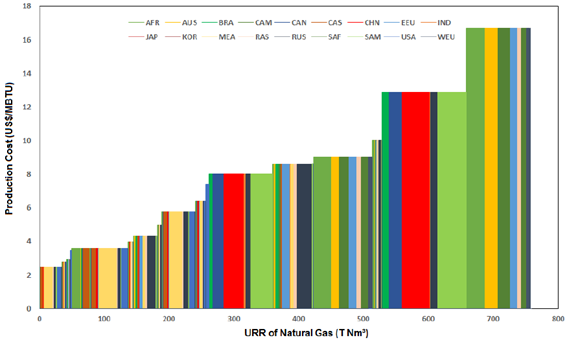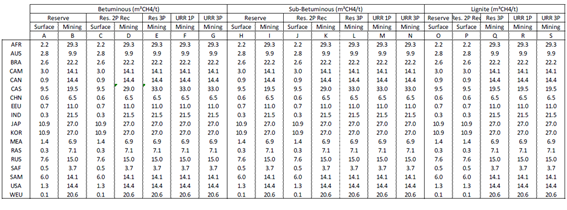Fossil energy resources - COFFEE-TEA
| Corresponding documentation | |
|---|---|
| Previous versions | |
| Model information | |
| Model link | |
| Institution | COPPE/UFRJ (Cenergia), Brazil, http://www.cenergialab.coppe.ufrj.br/. |
| Solution concept | General equilibrium (closed economy) |
| Solution method | The COFFEE model is solved through Linear Programming (LP). The TEA model is formulated as a mixed complementary problem (MCP) and is solved through Mathematical Programming System for General Equilibrium -- MPSGE within GAMS using the PATH solver. |
| Anticipation | |
The oil and natural gas supply curve in the COFFEE model were built based on several studies. The data was obtained from detailed resource assessments in the engineering literature, detailed technical and cost parameters (such as Enhanced Oil Recovery, or EOR, recovery rates and potential) are available in mcglade2014uncertaintiesrogner1997assessmentiea2014. Data were gathered processed and compiled to determine the supply curve, as shown in <xr id="fig:Oil"/> and <xr id="fig:Gas"/>.
<figure id="fig:Oil">
</figure>.
<figure id="fig:Gas">
</figure>.
A coal resource assessment profile was also developed to check this availability. In the model, the categories defined for coal are betuminous, sub-betuminous, and lignite, all of them split in surface or mining availability for each region. Main sources for developing a specific supply curve include rogner1997assessment and other related literature that was used to the estimate the methane content for every coal resource category (<xr id="fig:Coal"/>).
<figure id="fig:Coal">
</figure>.


